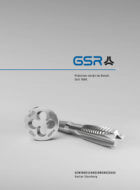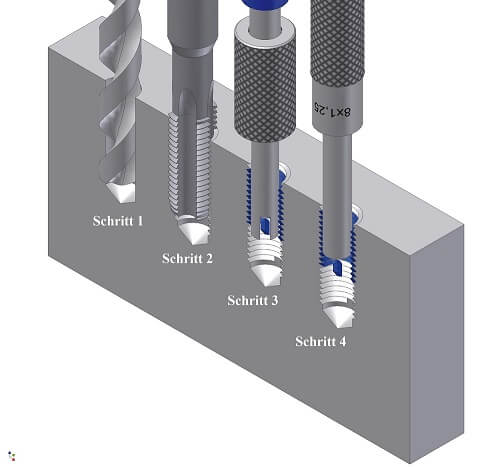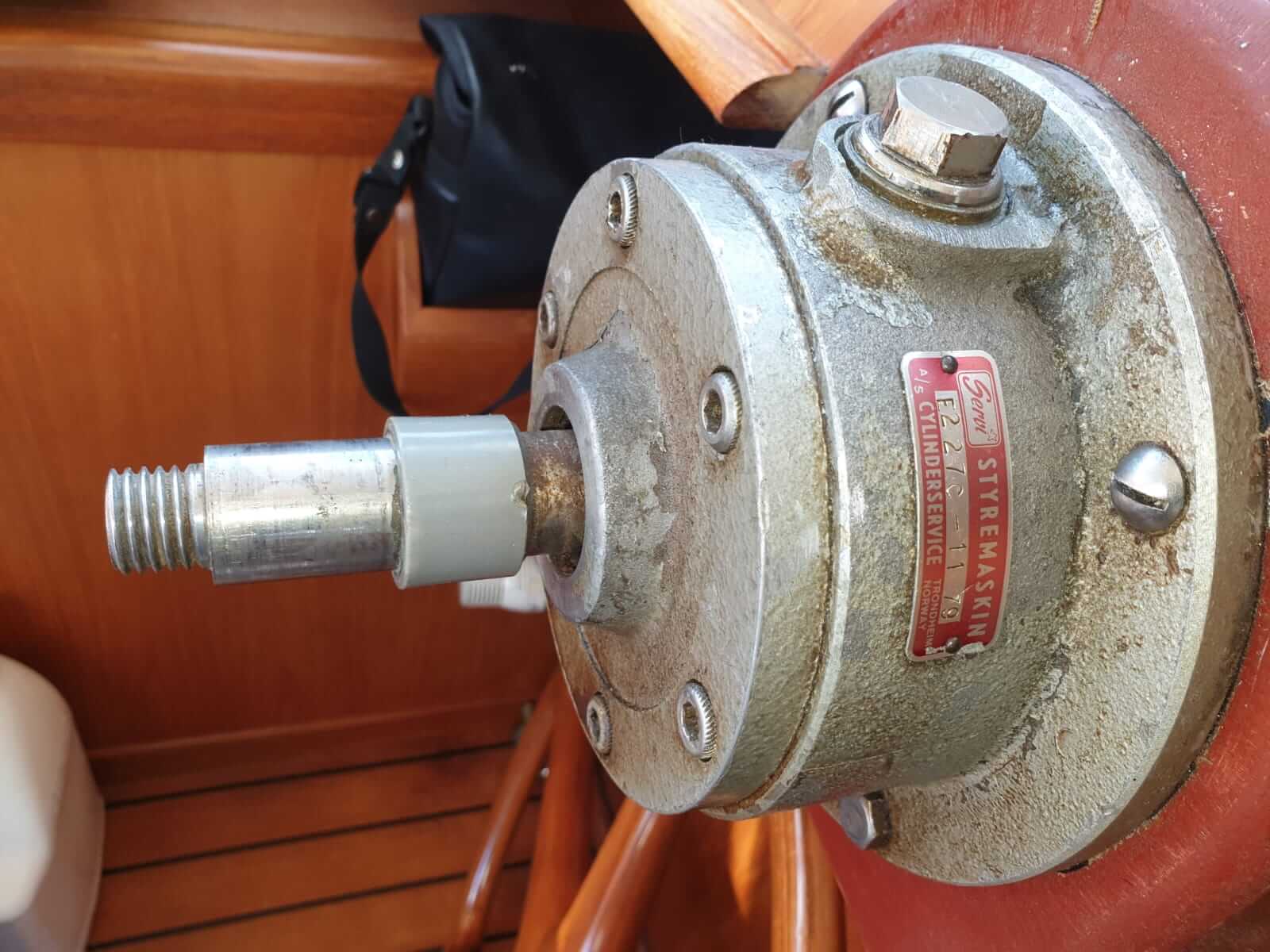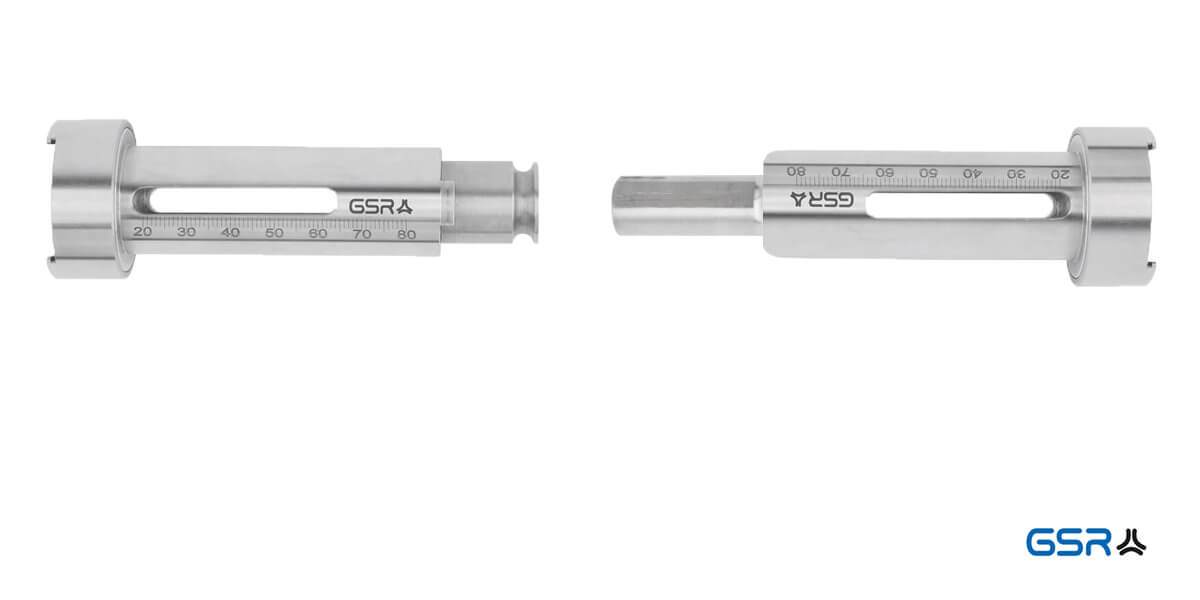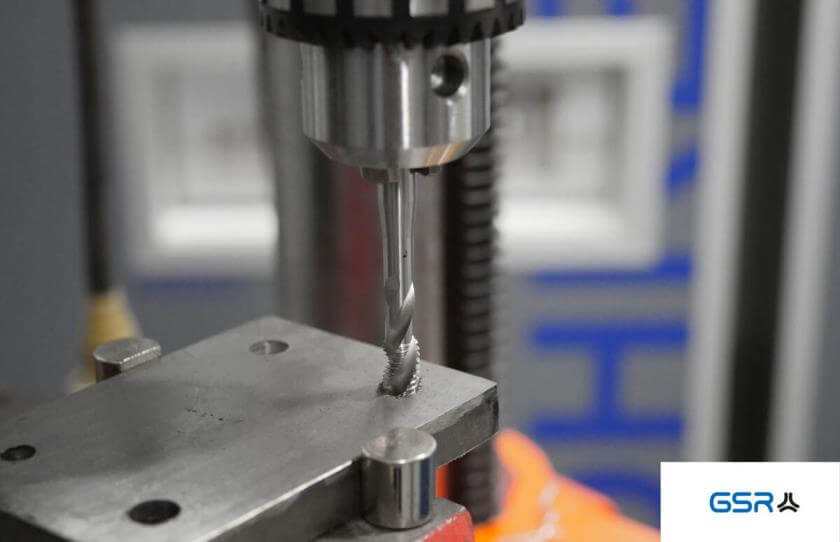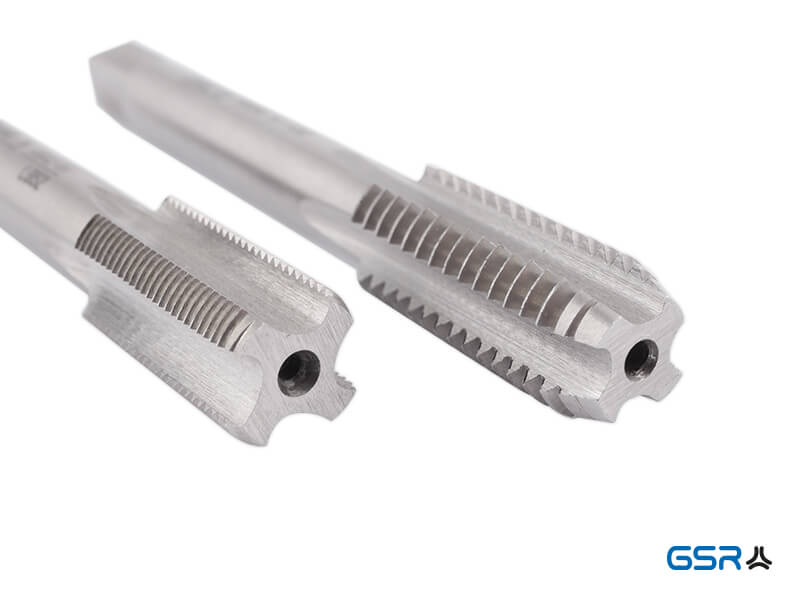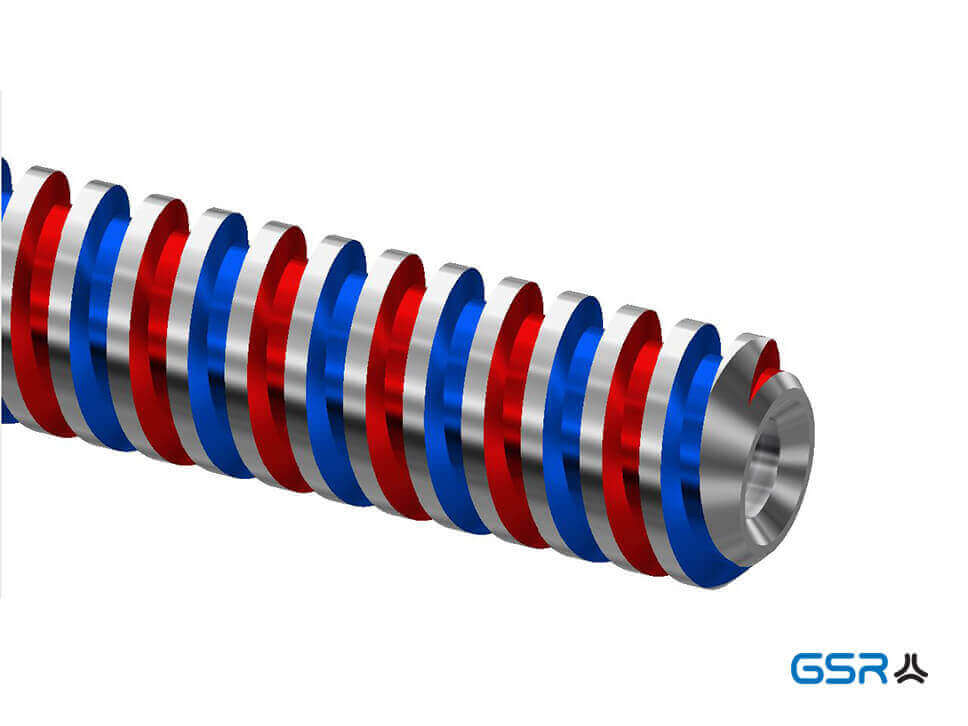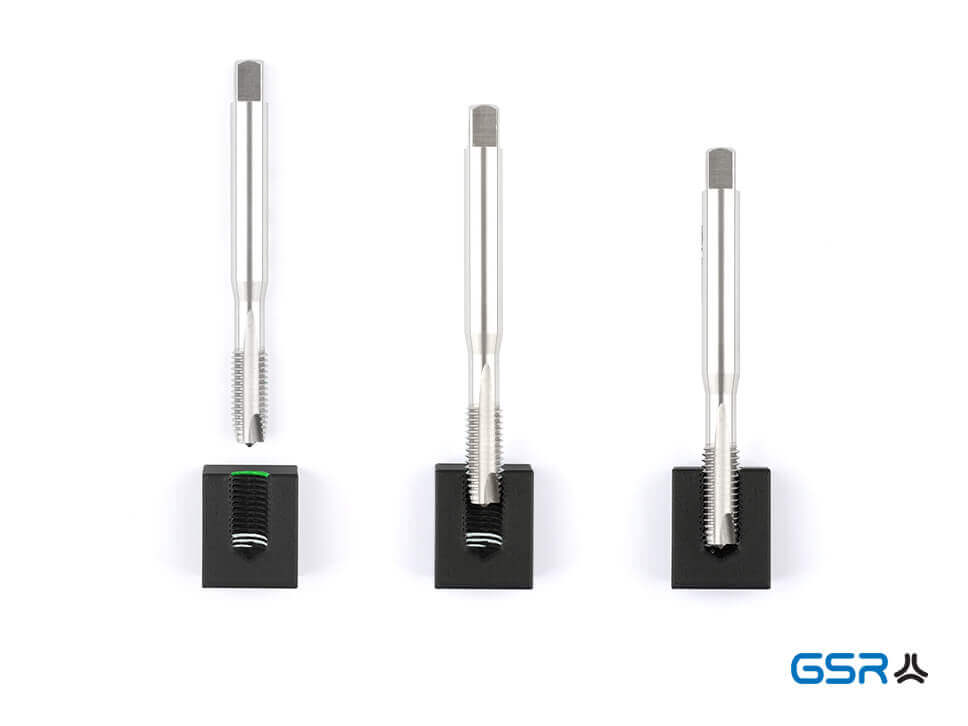Which is the better tap wrench? All-steel tap wrench or zinc die-cast tap wrench
In today’s post, we take a closer look at the adjustable tap wrench. What are the differences between zinc die-cast tap wrenches and all-steel tap wrenches? Which is better? Who is the steel version of the tap wrench suitable for? When should you use an all-steel tap wrench? What is the advantage of a steel tap wrench?
And not to forget: Why does an all-steel tap wrench need a centring eye?

Short excursus on the tap wrench
The tap wrench is a holding tool for cutting internal threads by hand. A tap wrench is clamped in the adjustable tap wrench. But basically any tool with a square can be clamped. The most commonly used tools are hand taps, reamers and screw extractors. In common parlance, there are various names and designations for the adjustable tap wrench. Very often it is called a reversible tap or a tap holder. However, the correct designation according to DIN 1814 is: tap wrench, adjustable.
There are many adjustable tap wrenches in every price and quality class. However, we have described in detail how you can recognise a good tap wrench in this blog post: Identifying high quality tap wrenches.

The most important quality criteria for evaluating a tap wrench are: The processed material in the winch iron body as well as in the handles, the clamping jaw and the geometry of the winch iron body.
What are the differences between zinc die-cast tap wrenches and all-steel tap wrenches?
As the name suggests, the main difference between the two designs lies in the material of the basic body. The body can either be made of steel in the investment casting process or of zinc die casting in the hot chamber die casting process.
You can find more information about our high-quality GSR Silver holding tools made of zinc die-casting alloy Zamak5 here.
Why does an all-steel tap wrench need a centring eye?
The centring eye is a product innovation from the GSR think tank and is basically a spirit level recessed in the tool body. The spirit level helps to align the all-steel tap wrench plumb and true.
Attentive readers will already be familiar with the centring eye. GSR had already brought out a tool holder with ratchet and centring eye / spirit level in 2016.
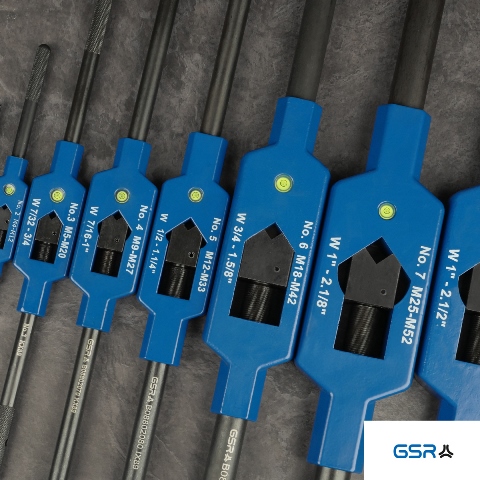
This product innovation alone is unique due to the high-quality workmanship of the body geometry, handels and adjustable clamping jaw. As a result, higher torques are achieved. The integrated centring eye also ensures more precise alignment and better cutting of threads. You no longer need an angle for alignment. An advantage that leads to fewer errors, especially with the large and more expensive tap diameters. Skewed threads can lead to tool breakage and workpiece breakage.
Application of the all-steel tap wrench with centring eye
The use of the all-steel tap wrench with centring eye is very easy. Clamp the tap firmly with the help of the adjustable jaw. The clamping jaw is secured against rotation by the cotter pin. Place the tap wrench including tap on the core hole. When tapping, you can cut 2 – 3 turns until the tap grips/ grips. While continuing to turn, align the vial bubble centrally. Now finish cutting the thread.
Silver all-steel tap wrench with centring eye and the 4 product features:
- The steel body: precision casting and powder-coated
- The handles: Non-slip
- The clamping jaw: adjustable and eroded
- The centring eye: for plumb alignment
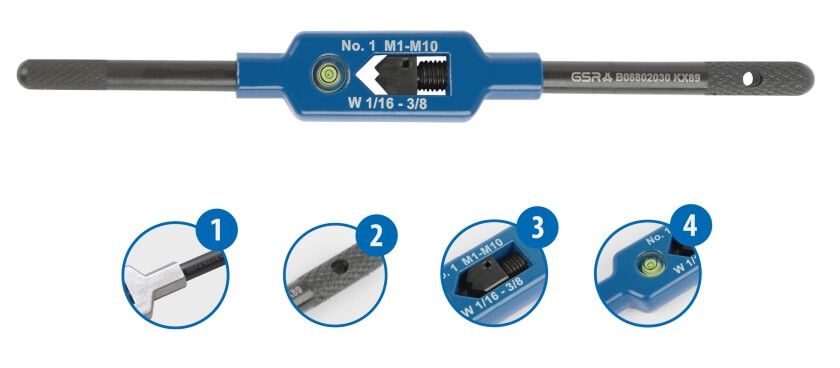
Technical table of all-steel tap wrenches with centring eyel / spirit level
| Art. No. | Description | 4 sqare shank (mm) |
metric threads |
british steel pipe |
british Whitworth |
Reamer (mm) |
| 08802020 | adjustable tap wrench DIN 1814 Nr. 0 steel Silver | 2,0 – 5,0 | M 1 – 8 | — | W 1/16 – 5/16 | 2,5 – 6,5 |
| 08802030 | adjustable tap wrench DIN 1814 Nr. 1 steel Silver | 2,0 – 6,3 | M 1 – 10 | G 1/8 | W 1/16 – 3/8 | 2,5 – 8,0 |
| 08802040 | adjustable tap wrench DIN 1814 Nr. 1.1/2 steel Silver | 2,1 – 8,0 | M 1 – 12 | G 1/8 | W 1/16 – 1/2 | 2,5 – 11,0 |
| 08802050 | adjustable tap wrench DIN 1814 Nr. 2 steel Silver | 3,0 – 9,0 | M 4 – 12 | G 1/8 | W 5/32 – 1/2 | 4,0 – 11,0 |
| 08802060 | adjustable tap wrench DIN 1814 Nr. 3 steel Silver | 4,9 – 12,0 | M 5 – 20 | G 1/8 – 1/2 | W 7/32 – 3/4 | 6,5 – 15,0 |
| 08802070 | adjustable tap wrench DIN 1814 Nr. 4 steel Silver | 5,5 – 16,0 | M 9 – 27 | G 1/4 – 3/4 | W 7/16 – 1″ | 7,0 – 20,0 |
| 08802080 | adjustable tap wrench DIN 1814 Nr. 5 steel Silver | 7,0 – 20,0 | M 12 – 33 | G 1/4 – 1″ | W 1/2 – 1.1/4 | 9,0 – 26,0 |
| 08802090 | adjustable tap wrench DIN 1814 Nr. 6 steel Silver | 11,0 – 24,0 | M 18 – 42 | G 1/2 – 1 1/4 | W 3/4 – 1.5/8 | 14,0 – 30,0 |
| 08802090 | adjustable tap wrench DIN 1814 Nr. 7 steel Silver | 16,0 – 32,0 | M 25 – 52 | G 3/4 – 1.3/4 | W 1″ – 2″ | 20,0 – 37,0 |
| 08802090 | adjustable tap wrench DIN 1814 Nr. 8 steel Silver | 16,0 – 40,0 | M 25 – 90 | G 3/4-3″ | W 1″ – 3″ | 20,0 – 46,0 |
Conclusion on the all-steel tap wrench with centring eye
The differences between zinc die-cast and all-steel tap wrenches lie essentially in the material of the base body. All-steel tap wrenches should be used with higher torque, such as larger tap diameters, to minimise the risk of injury. Never extend the handles of a zinc die-cast tap wrench with pipes or other tools to increase the torque. It is better to use a steel holding tool. The built-in centring eye in the new GSR Silver all-steel tap wrenches ensures a plumb cut. The centring eye is an advantage both with large square tools because the pieces can be processed precisely. The built-in centring eye is also an advantage for filigree work. Demanding users, including those in the fields of model making, jewellery production or watchmaking, like to use the tap wrench with centring eye.
By the way, you will find a large selection of holding tools for the threaded end in our shop: www.gewindewerkzeuge.com
Other helpful sources:
- No.1 Thread determination with inch thread
- No.2 Determination of metric threads
- No.3 Thread determination for UN vintage thread
- No.4 Thread determination: UNF engine block of a Land Rover
- No.5 Thread determonation for objective lens treads
- How to use a thread template correctly: go to the tutorial on Youtube!
Did you like this article? Do you have any questions or feedback? Write to us.





